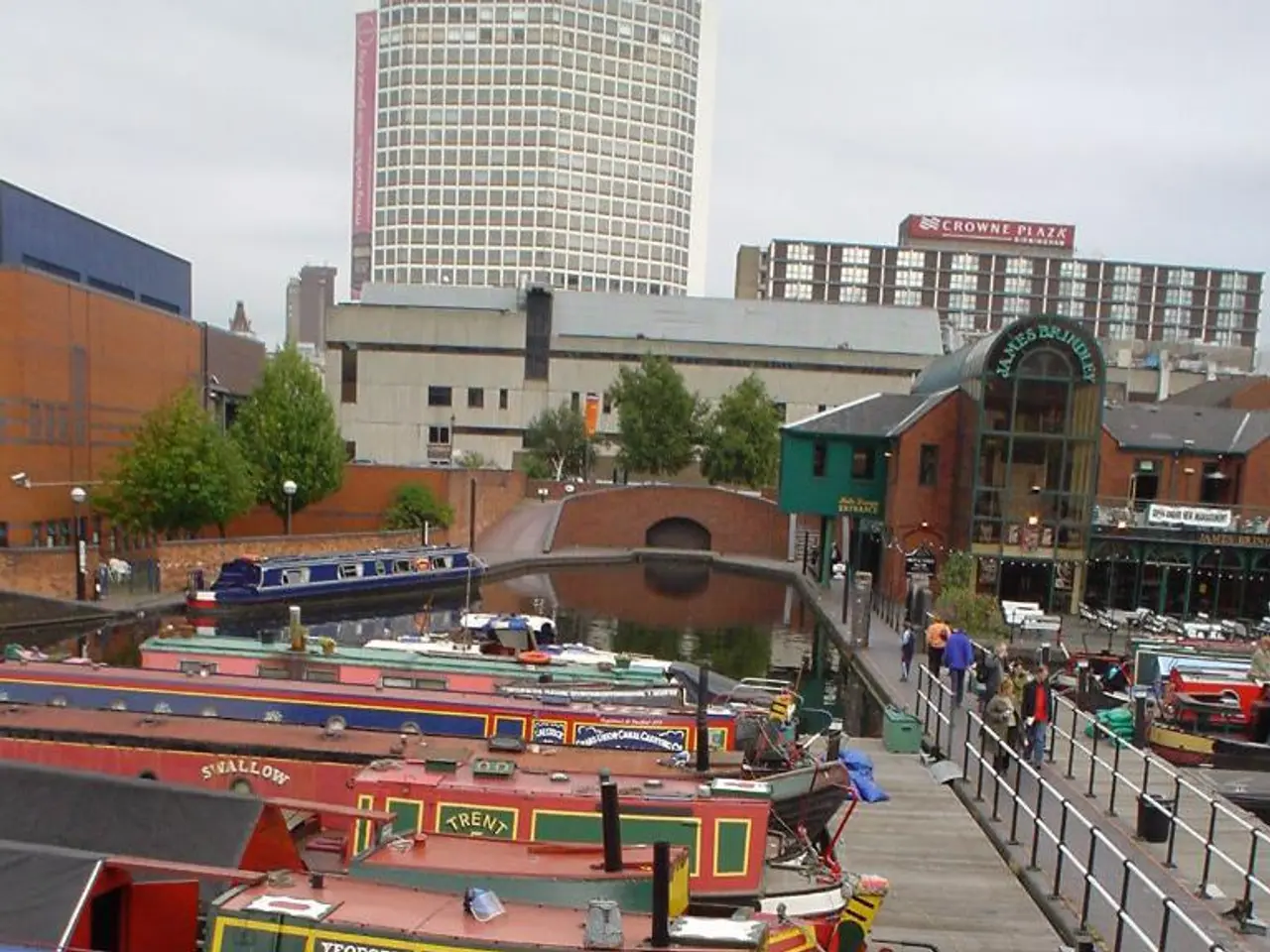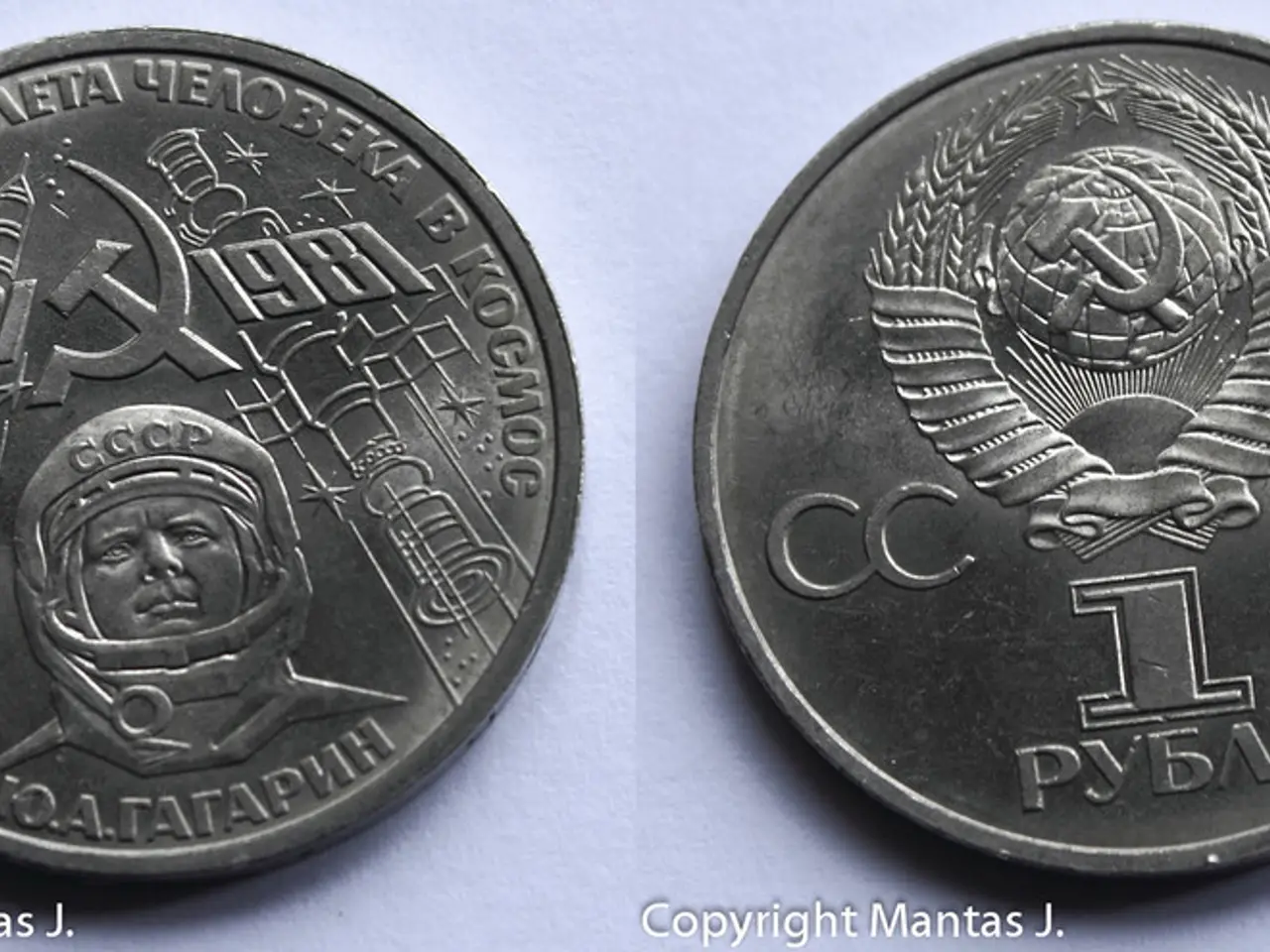A wormhole: Hypothetical passage through spacetime that could allow for near-instant travel between distant points, but its existence remains questionable.
🌠 Ever wondered about stepping through a portal to another universe? Delving into the realms of science, let's talk about wormholes - those intriguing portals from the realm of fantasy, that just might exist beyond the confines of our reality.
But first, what actually is a wormhole? A wormhole, or Einstein-Rosen bridge, is a wild, theoretical prediction born from Albert Einstein's general theory of relativity. In simple terms, they're like tunnels or bridges that connect two distant points in space and time, potentially allowing instantaneous passage across vast distances.
To set things straight, imagine a napkin with you and your favorite faraway destination marked. If you were to traverse it the regular way, the trip would be long. But if you crease the napkin such that your destination is adjacent to your current location and poke a hole right through, you could get to your desired spot almost immediately. That's a basic representation of a wormhole: it's essentially a shortcut that warps space-time.
So, do these cosmic highways to the stars exist in reality? To find out, we need to take a closer look at the science that satisfies our curiosity and probes the boundaries of the known universe. Buckle up!
How wormholes are visualized and studied
The genesis of wormholes dates back to 1916 when Austrian physicist Ludwig Flamm noticed a peculiar connection between black holes and their so-called white counterparts. While black holes inhale all matter around them, white holes are incapable of accepting anything inside but can eject matter outward. Flamm pondered on the possibility of linking them via a unique space-time tunnel – in essence, a wormhole.
Several years passed, and in 1935, Einstein and his colleague Nathan Rosen mathematically described such structures, christening them Einstein-Rosen bridges. However, they found that wormholes were unstable: the tunnels collapsed on their own under the force of gravity, even before light could pass through them.
Fast forward to the 1980s, physicists tried to spice things up and proposed a radical idea: could wormholes be traversable? Some even ventured into the realm of science fiction, like Kip Thorne, consultant for the films "Contact" and "Interstellar", who believed that exotic matter with negative energy could stabilize these tunnels and pave the way for instantaneous travel.
Though the prospect of traversable wormholes might seem akin to science fiction, these quirky tunnels are now considered as potentially real objects. Let's see how scientists are on a quest to find these elusive space-time portals.
The search for the space-time gateways
As of present, scientists haven't managed to find any wormholes, but that doesn't stop them from trying. Below are the methods science is using to search for all those cosmic portals.
Theoretical models
In 1999, physicists Lisa Randall and Raman Sundrum devised a model where our four-dimensional universe is part of a larger five-dimensional space. They proposed that wormholes could pass through this additional dimension and gain stability due to gravity and the peculiarities of space.
In 2021, Juan Maldacena and Alexei Milichin contributed a theoretical model where a wormhole could exist even in four dimensions, without collapsing. They used a combination of gravity, electromagnetism, and special light particles called fermions to keep the tunnel open, even though such stability hasn't been observed yet.
Experimental methods
In 2015, the world witnessed a new tool for searching for wormholes: gravitational waves. Gravitational waves occur when two unimaginably massive objects, like black holes or neutron stars, collide. Theories suggest that if wormholes collided instead of black holes, their signals would be slightly different, with an "echo" after the primary burst of gravitational waves. So far, these signals have proven elusive, but hopefully, future improvements in detector sensitivity will change that.
Another technique is analyzing the cosmic microwave background, the thermal afterglow of the Big Bang. If wormholes were present in the early universe, they might have affected the distribution of matter, creating unusual gaps or peculiar temperature fluctuations in the cosmic microwave background. Such anomalies have indeed been spotted, but it's still a subject of ongoing study to determine if they are due to wormholes.
Very recently, physicists have started using quantum computers to model wormhole behavior under conditions impossible to replicate in a lab. In 2022, the Google Quantum AI team began experimenting with using quantum entanglement to transmit information between quantum systems, mimicking a tiny wormhole's behavior in an artificial space-time model. It's a fascinating field that continues to push the boundaries of what we know about space and time.
So, if wormholes exist, they could offer faster-than-light travel and shift our understanding of the universe. But before you pack your bags for an interstellar adventure, there are a few challenges worth considering.
The potential hazards of traversable wormholes
Even if the enigmatic tunnels are just around the corner, passing through them would come with some hair-raising obstacles that call into question the feasibility of a wormhole journey:
Ultra-high temperatures
In a hypothetical wormhole where matter is actively passing through, models suggest that plasma vortices arise at the "throat" of the wormhole, heating the plasma to millions of degrees – thousands of times hotter than the Sun's core. This would leave any spaceship atoms vaporizing even before entering the tunnel, and trigger nuclear reactions, resulting in a terrifying thermonuclear disaster.
Reliance on exotic matter
According to classical theory, wormholes require exotic matter with negative energy for stabilization. The problem? The amount of exotic matter needed for the wormhole to be the size of a macro object, like an apple, is immense – requiring as much negative energy as the Sun produces over millions of years. Needless to say, we don't expect to meet that energy requirement anytime soon.
Time dilation
Traveling through wormholes could have some curious consequences for time. For instance, a journey through a wormhole might take just a few seconds for the traveler, but for an observer outside, it could appear as if decades or even millennia have passed. To put it simply, your time could warp while inside a wormhole, leaving your loved ones and fellow humans far behind.
Temporal paradoxes
The questionable nature of wormholes also raises concerns about their potential use as time machines. For example, if someone could return to the past and influence their own birth, they would create a paradox, violating causality. Stephen Hawking's theory states that a barrier called "chronological censorship" exists in nature, preventing wormholes from becoming time machines.
Speed challenges
Navigating a wormhole would involve accelerating to an astounding speed near light speed. This rapid acceleration would generate tremendous gravitational forces, making the journey more gruesome than the peaceful passage through a cinematic wormhole might suggest. Even astronauts skilled in traversing microgravity environments would likely lose consciousness under such extreme conditions. The spaceship's very construction would also need to be made of materials yet unobtainable by present technology.
In conclusion, wormholes represent one of the most intriguing mysteries in modern physics. On one hand, they fit neatly into Einstein's equations, hinting towards their potential existence. On the other, traveling through them would mean braving unimaginable temperatures, the creation of exotic matter, and the bending of time, leaving much room for debate. As science continues to unfold its secrets about the universe, wormholes remain a captivating topic that stimulates our curiosity and pushes the boundaries of our understanding.
⭐️ ** Curious about quantum entanglement? Find out all about its intriguing properties and real-life applications.⭐️ Want to know how much Einstein Really Bothered About Quantum Mechanics?⭐️ Quantum Computing: Are we on the brink of realizing its potential?**
- In the quest to understand these cosmic portals, scientists are developing theoretical models that suggest wormholes could pass through extra dimensions and be kept open by exotic matter, thus gaining stability.
- Another method scientists are using to search for wormholes is analyzing the cosmic microwave background, with the hope of spotting unusual gaps or temperature fluctuations that might indicate the presence of wormholes.




